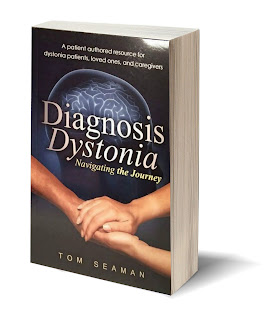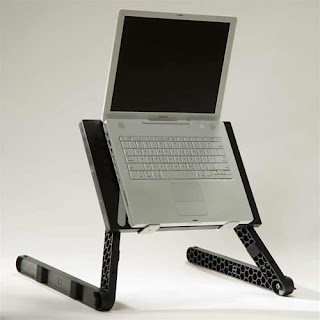I have been given this product as part of a product review through the Chronic Illness Bloggers network. Although the product was a gift, all opinions in this review remain my own and I was in no way influenced by the company.
As I have shared in many of my blogs, articles, and book, I am always looking for ways to combat chronic pain. Not only for myself, but for others as well because I know firsthand how brutal it is to suffer with pain. In my case, pain is caused by a neurological movement disorder called dystonia.
Every day I have pain that ranks on a scale of 1-10 (I am not a fan of this subjective pain scale. I am just using it to describe my daily pain variation). It can be localized or widespread, and I never know from day to day, hour to hour, where that pain might be, how bad it will be, or how long it will last. Therefore, I use a variety of different things to alleviate my pain, which you can learn more about in my blog and book. All things considered, I think I do a good job at managing my pain, but I can have some rough days so I can always do better. This is why I am always on the lookout for anything to add to my toolbox. Enter Invigorate pain relieving lotion, which I have been using for the past 2 months.
As I have shared in many of my blogs, articles, and book, I am always looking for ways to combat chronic pain. Not only for myself, but for others as well because I know firsthand how brutal it is to suffer with pain. In my case, pain is caused by a neurological movement disorder called dystonia.
Every day I have pain that ranks on a scale of 1-10 (I am not a fan of this subjective pain scale. I am just using it to describe my daily pain variation). It can be localized or widespread, and I never know from day to day, hour to hour, where that pain might be, how bad it will be, or how long it will last. Therefore, I use a variety of different things to alleviate my pain, which you can learn more about in my blog and book. All things considered, I think I do a good job at managing my pain, but I can have some rough days so I can always do better. This is why I am always on the lookout for anything to add to my toolbox. Enter Invigorate pain relieving lotion, which I have been using for the past 2 months.
Invigorate, made by Resonant Botanicals, is an all-natural pain relieving lotion made with the herbs turmeric, valerian, devil’s claw, manjistha and arjuna, steeped in organic grape seed oil. This infused herb oil is added to organic hemp oil, hemp oil extract, apricot kernel oil, jojoba oil, clove oil extract, and borage oil, and essential oils such as sandalwood and rose otto. It also contains magnesium and MSM (Methylsulphonylmethane).
Most of us are familiar with magnesium and probably take it. I have been taking it for years for a variety of different reasons. For me it is one of my essential supplements for overall health and some specific pain issues. According to their website, Resonant Botanicals says the following about magnesium: “less than 60% of Americans obtain enough magnesium in their diet. Magnesium deficiency can be detected by several symptoms: fatigue, cramps, muscle pain, inflammation, insomnia, stress and hypertension, among others.”
MSM (Methylsulphonylmethane) is something we don’t hear much about. MSM is a powerful natural anti-inflammatory with many benefits, especially pain. A great book to learn more about MSM is called, The Miracle of MSM: The Natural Solution for Pain. Research suggests that MSM can act like a natural analgesic, helping prevent and treat muscle aches and pains, throbbing, and swelling, while improving range of motion and mobility. Clearly an important ingredient to have in Invigorate.
All of the science behind, personal experience is what matters most, which of course varies from person to person. I think it smells great with a light citrus fragrance, is easy to apply (not greasy and easily absorbs into the skin), and most importantly, it helps with my pain and stiffness. I use it every night before bed and as needed during the day. The difference I notice using it before bed is less pain and stiffness in my shoulders and neck in the morning. When I use it during the day, my muscles stay more relaxed. Not perfect of course, but it takes the edge off. It gives me a soothing feeling.
Not only do I use it for the pain in my neck and shoulders from dystonia, I have use it on my elbow where I have tendonitis. It cuts the pain in half most of the time. A few times in the past month I had a stomach ache and within 15 minutes, the discomfort was 75-100% gone. I have since shared this with my mother who has stomach issues that sometimes keep her on the couch or in bed with a heat pack for hours at time. She began using Invigorate every morning and night, and has noticed some relief. She still has some issues, but she claims to have been feeling better than usual.
Not only do I use it for the pain in my neck and shoulders from dystonia, I have use it on my elbow where I have tendonitis. It cuts the pain in half most of the time. A few times in the past month I had a stomach ache and within 15 minutes, the discomfort was 75-100% gone. I have since shared this with my mother who has stomach issues that sometimes keep her on the couch or in bed with a heat pack for hours at time. She began using Invigorate every morning and night, and has noticed some relief. She still has some issues, but she claims to have been feeling better than usual.
Invigorate is available in two sizes: 8 oz. and 2 oz. The 2 oz. container is TSA-approved so it is safe for travel by plane. The price ranges from $20 – $55, which is quite good considering the competition and all of the natural ingredients and formulation process. It also lasts a while. I have had my 8 oz. container for 2 months and still have plenty left, and this is with daily use. Use Coupon Code RELIEF for 10% off and free shipping.
Another feature is their packaging. Instead of plastic, they use brushed aluminum containers. This is because plastic contains phthlates, molecules that make plastic pliable. Phthlates leach out at temperatures above 86 degrees Fahrenheit. For most people, phthlates are excreted through the urine, but for those with autoimmune compromised conditions (and women during pregnancy) phthlates can become troublesome. There is more about why they use these containers on their website.
I hope you decide to give it a try. I have been very impressed with the product and company. They are very knowledgeable and extremely helpful. When you read on their website about how they came to be, you will know why they are more than just a run of the mill company. They put their hearts into their brand, which is the kind of company I am proud to support!
Tom Seaman is a Certified Professional Life Coach in the area of health and wellness, and author of the book, Diagnosis Dystonia: Navigating the Journey, a comprehensive resource for anyone suffering with any life challenge. He is also a motivational speaker, chronic pain and dystonia awareness advocate, health blogger, and volunteers for the Dystonia Medical Research Foundation (DMRF) as a support group leader, for WEGO Health as a patient expert panelist, and is a member and writer for Chronic Illness Bloggers Network. To learn more about Tom, his coaching practice, and get a copy of his book, visit www.tomseamancoaching.com. Follow him on Twitter @Dystoniabook1 and Instagram
Tom Seaman is a Certified Professional Life Coach in the area of health and wellness, and author of the book, Diagnosis Dystonia: Navigating the Journey, a comprehensive resource for anyone suffering with any life challenge. He is also a motivational speaker, chronic pain and dystonia awareness advocate, health blogger, and volunteers for the Dystonia Medical Research Foundation (DMRF) as a support group leader, for WEGO Health as a patient expert panelist, and is a member and writer for Chronic Illness Bloggers Network. To learn more about Tom, his coaching practice, and get a copy of his book, visit www.tomseamancoaching.com. Follow him on Twitter @Dystoniabook1 and Instagram

















